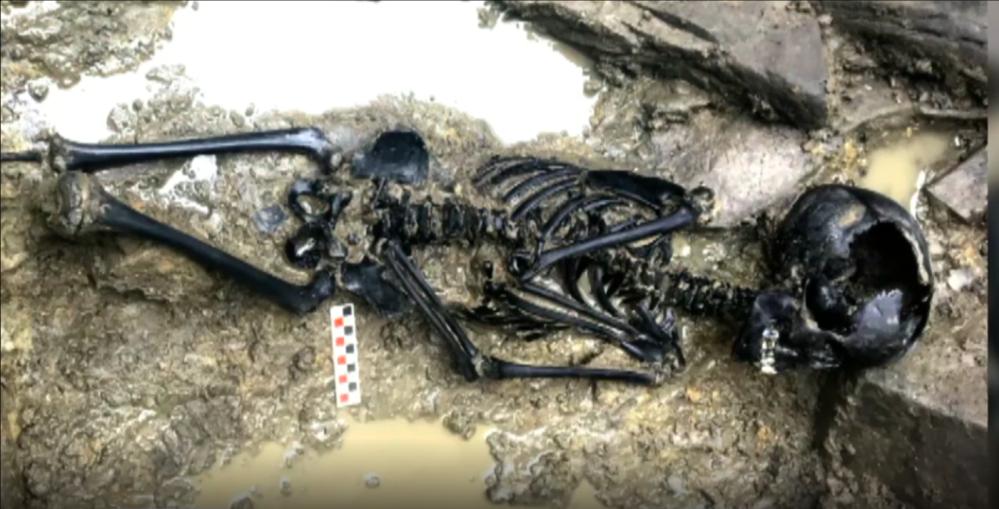Viking-Era Child’s Remains Discovered in Dublin
RTÉ reports that the remains of a child and an iron buckle or fastener were uncovered in Dubh Linn, a dark tidal pool where the River Poddle enters the River Liffey at the site of Dublin Castle, by a team of researchers led by Alan Hayden of University College Dublin.
The find was made during an excavation near Dublin Castle where in ancient times the River Poddle flowed into the Dubh Linn near the River Liffey.
The skeleton, which was largely intact, was found just at the point before the river entered the pool and is thought to date from the 9th or 10th century.

After it was excavated it was discovered to be that of a child aged between 10 and 12 years of age – most likely a boy – and is thought to have been wrapped in a shroud before being thrown into the river.
The body was found with shoulders hunched together and an iron buckle or fastener was found with the body.
Alan Hayden from the UCD School of Archaeology who was leading the dig said the fact that it was not given a proper burial and was dumped in this manner could suggest an act of violence.
Further tests will be carried out to determine the date of death, gender and the ethnic origin of the person.
The dig, which is being carried out on the site of office development on Ship Street beside Dublin Castle, has already discovered that the original Dubh Linn was much larger than originally thought, extending beyond the walls of Dublin Castle.
Now the dig has found that the size of the original Viking settlement or Longphort can be shown to be double the extent previously established.
The archaeologists uncovered banks that would have run along the Poddle and the Dubh Linn with gaps to bring in boats. Inland there would have been a high fortification.
The area of the Longphort in the 10th and 11th centuries would have extended from the present-day Molly Malone statue on Suffolk Street to St Patrick’s Cathedral.
The dig has also established that Vikings continued living at the Dubh Linn even after the more famous Wood Quay settlement was established a kilometre away.
The Poddle was culverted in the 12th century and covered over completed in the 18th century. A 19th century well was found on the site.





